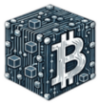Mining in blockchain refers to the process by which transactions are verified and added to a blockchain ledger, as well as the mechanism through which new cryptocurrency coins or tokens are created. It is a critical component of many decentralized networks, ensuring their security, transparency, and functionality.
How Does Blockchain Mining Work?
At its core, mining involves solving complex mathematical problems using computational power. These problems are designed to validate transactions and secure the blockchain. The process typically works as follows:
- Transaction Collection: Transactions initiated by users are grouped into a “block.”
- Puzzle Solving: Miners compete to solve a cryptographic puzzle tied to this block. This puzzle requires significant computational resources and is often referred to as “proof-of-work.”
- Block Validation: The miner who successfully solves the puzzle first broadcasts the solution to the network. Other nodes verify the solution to ensure its validity.
- Block Addition: Once verified, the new block is added to the blockchain, and the miner is rewarded with cryptocurrency, usually in the form of newly minted coins and transaction fees.
This process repeats continuously, ensuring the blockchain remains up-to-date and secure.
Key Characteristics and Challenges of Mining
Mining serves as the backbone of blockchain networks like Bitcoin and Ethereum (though Ethereum now uses proof-of-stake). Here are its defining characteristics and challenges:
- Energy-Intensive: Mining requires significant electricity, often raising environmental concerns.
- Specialized Equipment: Over time, mining has shifted from simple computer setups to advanced hardware like ASICs (Application-Specific Integrated Circuits).
- Decentralization and Security: Mining ensures that no single entity controls the network, making blockchains resilient to fraud or attacks.
- Reward Variability: The mining reward can fluctuate due to factors such as cryptocurrency price changes or halving events (e.g., Bitcoin’s halving every four years).
- Mining Pools: Many miners join forces in pools to combine their computational power and increase their chances of earning rewards.
Mining is the cornerstone of many blockchain networks, ensuring their security, transparency, and decentralization. While it comes with challenges like energy consumption and the need for specialized equipment, it also represents a significant innovation in digital finance and technology. For those considering mining, understanding its intricacies is essential for success.



